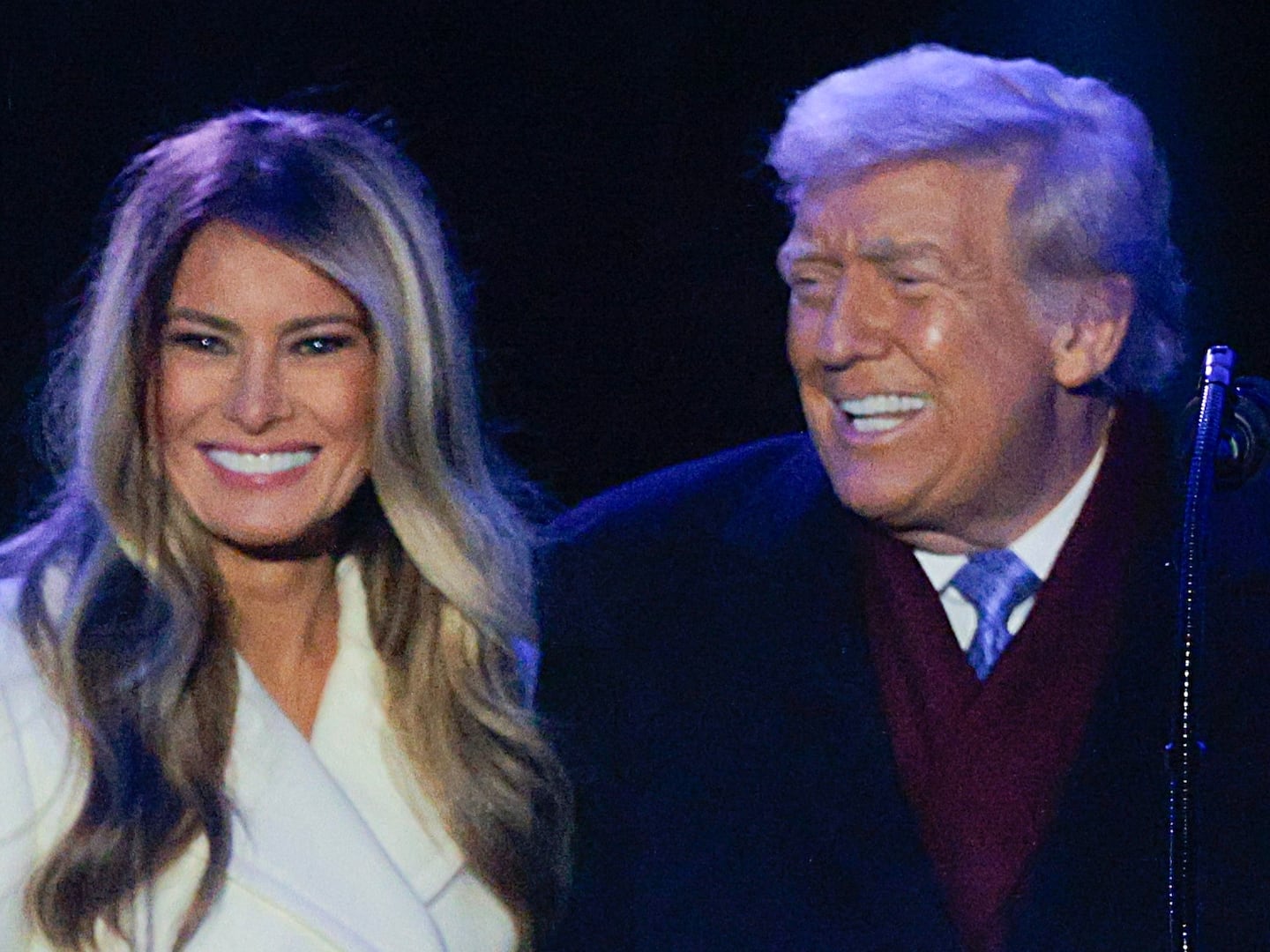When Geena Davis’s daughter was 2, she did what most mothers do: she started to show her children’s movies and TV shows. What she never expected was to be horrified.
Watching these movies alongside young Alizeh, she noticed that there were far more male characters than female characters, by an obscene number. It was so obvious, she thought, that surely others have noticed, too.
“In the 21st century, it was completely crazy to me that we would be teaching kids to have gender bias from minute one,” she says. “When we should be showing them boys and girls equally because the world is very diverse.”
But everyone she went to said it wasn’t true. It couldn’t be—at least not anymore. She appealed directly to the creators of kids entertainment, the people responsible for creating these stories, and they also denied it. “I couldn’t believe it,” she says. “How is this possible they don’t see what they’re making?”
Davis reached a tipping point when she spoke to the head of one studio who told her she couldn’t be referring to them. He cited the fact that they had made one movie with one female character, serving that up as proof that his studio had fixed gender inequality. “With one movie, he thought he fixed it!” Davis says. “I was like, alright, that’s it. Now I’m going to get the numbers, because I have to convince them what they’re doing.”
She just wanted to show her daughter a movie. As she tells me, “I didn’t intend to hit my life’s ambition at that point.”
The star is relaying the birth of what would become the Geena Davis Institute on Gender in Media, which launched in 2004 with the goal of working collaboratively with Hollywood and members of the entertainment industry to dramatically increase the visibility, representation, and presence of female characters in media.
In its 15 years of existence, the institute has employed cutting edge data-collecting technology—Davis received a Global Impact Award from Google in 2012 to advance the research—in order to provide irrefutable evidence of a bias against women on screen.
“Eighty percent of the media consumed worldwide is created in the United States,” Davis says in the new documentary This Changes Everything. “We’re responsible for exporting a pretty negative view of women.”
This Changes Everything, which will have a theatrical release Aug. 9 and is executive produced by Davis, explores the historical underrepresentation and misrepresentation of women in the entertainment industry, using research from the Geena Davis Institute, discrimination lawsuits, as well as anecdotal evidence from the Thelma & Louise star, along with Meryl Streep, Reese Witherspoon, Shonda Rhimes, and others.
The release of This Changes Everything happens to coincide with the third season launch of Netflix’s GLOW, the comedy series about the making of an all-female wrestling TV show in the ’80s created by Liz Flahive and Carly Mensch.

Davis joins the cast this season as Sandy Deveraux St. Clair, the entertainment director of a casino where the female wrestlers perform. Given the conversation we’re having and the subject matter of This Changes Everything, Davis says she “leapt at the chance” to be a part of the female-centric show when asked.
Later this year, Davis will receive the honorary Jean Hersholt Humanitarian Award at the Oscars, in honor of her legendary screen career as well as her activism. But, she stresses to me, she’s not done acting yet, nor has she pivoted full-time into research. “I don’t want people to think I quit my day job in order to do this.”
In fact, that there may even be that assumption could be the whole point of our conversation and her work in the first place—there’s a lot of work still to do.
It took two years for Davis’s institute to return the research on representation in kids’ movies. Out of the 101 top-grossing rated G movies from 1990 to 2005, 72 percent of all speaking roles were male. More than 4 out of 5 narrators were male.
Some might argue that a woman who had already spent a career in Hollywood shouldn’t be surprised by evidence of gender bias. But in this instance, Davis was appalled.
“I knew, and I think the average person knows, that there are fewer big parts and good parts for women in Hollywood,” Davis says. The shock was that this profound gender inequality also existed in entertainment aimed at kids.
“I was 1,000 percent sure that kids’ entertainment would be balanced, and well thought out, probably researched,” she says. “That it was meant to be very good for kids and, at the worst, utterly harmless. To find out that that was not true was stunning. To realize that at that young an age, an impressionable and vulnerable age, we’re showing them hour by hour by hour a world dominated by white males, it just was horrifying.”
The data, she found, was a magic bullet. She went to every studio, network, and guild and their jaws hit the floor. “They are incredibly motivated to change it, in part, because they do kids’ entertainment and love kids and feel horrible that they were doing something harmful without even realizing it,” she says.
If the key to change was data, she set out to collect some more.
In 2017, for example, research from the institute found that in the year’s 100 top-grossing films, men receive four times as much screen time as women and speak seven times more than women. One in 10 female characters are shown in sexually revealing clothing, six times the number of male characters.
For the last 15 years, the institute’s research has been a driving force of change at the intersection of gender and media, with Davis a near-constant presence at studios and networks discussing the work and moving forward.
But onscreen inequality is not the only facet of inequality in Hollywood. This Changes Everything digs deep into the institutionalized bias against women behind the camera, in directing roles specifically. Only 4 percent of the top 100 studio films of the last decade have been directed by women.
That bias is wholly different, Davis says. “People have known those numbers for decades. For decades. And the numbers never changed. And the data does nothing to convince them to hire more female directors. It’s kind of horrifying that everybody knows that it’s only 4 percent, but why don’t the numbers budge?”
That the documentary is titled This Changes Everything is a little cheeky. It’s actually Davis who first says the phrase in the film, but as a caution of what not to say.
She’s heard it before. She heard it when Thelma & Louise, written by a woman and starring two women, become a critical and commercial success and, now, a cinema classic. She heard it, too, after A League of Their Own, which was directed by Penny Marshall, crossed the $100 million mark a year later. More complicated female leads! More women behind the camera! Nothing changed.
Things do feel more different now than at any other time in her career, thanks to the #MeToo movement and the Time’s Up initiative. The key factor: Now it’s OK to talk about these things.
“I think my peers and I have all felt like we could never complain because they would just find somebody else,” she says. “You can’t talk about your salary. You can’t let on that you’ve been harassed or assaulted, even. You’d worry that they’d want to fire you.”
She points to the recent example of Gillian Anderson discovering that she was offered half of what David Duchovny made for the 2016 revival of The X-Files. She talked about it publicly—with The Daily Beast’s Melissa Leon—and her salary changed. “That’s brand new,” Davis says. “And I think in that regard, at least, we’re not going back.”
Other things haven’t changed, or at least won’t until there are more women behind the camera.
There’s a segment of This Changes Everything in which Chloe Grace Moretz relays the first time she went to wardrobe on set and there was a push-up bra and “chicken cutlets” meant to emphasize her breasts waiting for her. She says it’s the first time she realized she wasn’t thought of as an actor, but a sexual object. She was a teenager at the time.
Davis remembers that in her very first film role, in Tootsie, she spent nearly her entire screen time in her bra and underwear. Then there was the time early in her career when she auditioned for a scene in which her character would be speaking to a man while sitting on his lap. The director told her to act it out with him first, instructing her to sit on his lap.
“I did, even though I didn’t want to,” she says. “But I thought to myself, ‘I’m very new to the business and there’s no way to say no, or know what’s allowed or not allowed.’ It was all very inappropriate. That thing happens to everybody I’m sure.”
But the point of all this isn’t to complain or point fingers. It’s to impress upon us why the change is for the better. The storytelling is better for the medium, and because of that, better for culture. It’s better for women, to be sure. Images are powerful. There is shame and confusion when you don’t see yourself being reflected back, or only see yourself under a certain gaze—especially when that precedent is set at a young age.
People respond to what they see on screen. After Brave and The Hunger Games, there was an explosion of girls taking up archery. “The CSI Effect” is famous for drawing more women to the field of forensics. And if you’re just talking dollars, a 2018 study revealed that, on average, movies starring women made more money at the box office.
Davis is flattered, of course, when people talk about her roles in Thelma & Louise, A League of Their Own, or the TV series Commander-in-Chief being significant milestones in this conversation about representation. “If you have a chance to be in a movie that becomes a cultural landmark, I highly recommend it,” she laughs. “It’s really fun.”
But it’s not enough to just have that behind her.
“I’ll tell you something, though: I wish I was getting more,” she says. “I wish I was still getting parts like that, or somebody was. That would be my favorite legacy, if they said, ‘She played a lot of important parts, all the way to her nineties.’ It’s not just there.”
Her hope for the future is very simple and, she says, not even that revolutionary.
“It is that both in front of and behind the camera, the populations reflect the world as it actually is, which is half female and incredibly diverse. That shouldn’t be in any sense controversial. It’s just the way it needs to be, should be, and will be. We just need to get there much faster.”
“I always say, it’s the only direction we’re going anyway. Let’s just get there faster. Why hang around?”






